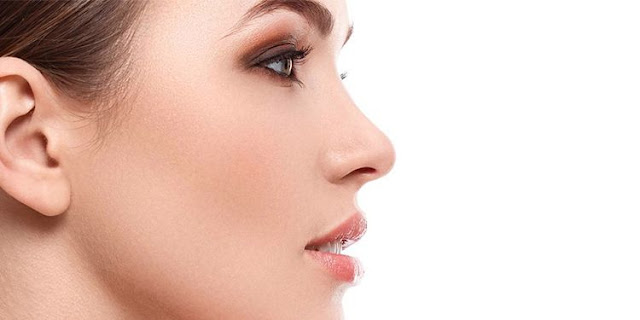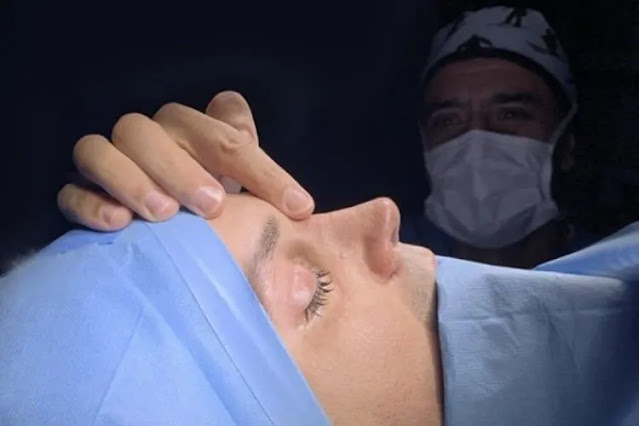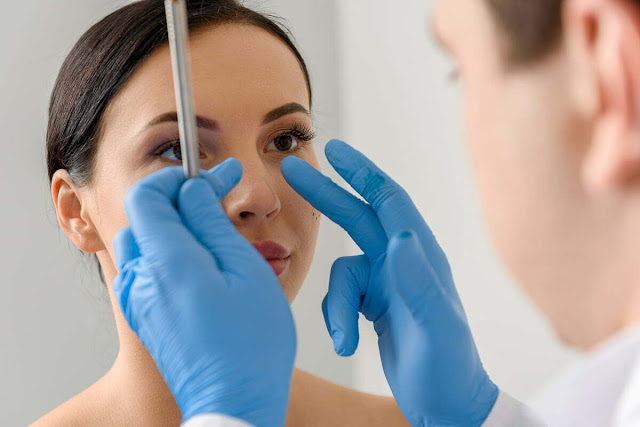What Is Rhinoplasty Surgery ?
What Is Rhinoplasty Surgery?
Rhinoplasty surgery, also known as a "nose job," is a cosmetic procedure that aims to enhance the appearance of the nose. It involves reshaping the nose by altering the size, shape, or proportions to achieve a more aesthetically pleasing result. However, rhinoplasty surgery is not just limited to cosmetic purposes. It can also be performed to correct functional issues, such as breathing difficulties or deformities caused by injury or birth defects.
Rhinoplasty surgery is a highly intricate procedure that requires the expertise of a skilled and qualified surgeon. The surgeon makes small incisions, either inside the nostrils or across the base of the nose, to access the underlying structures. They then carefully sculpt and reshape the bone and cartilage to achieve the desired outcome. The procedure can be performed under general anesthesia or local anesthesia with sedation, depending on the complexity of the surgery and the patient's preference.
One of the main reasons people opt for rhinoplasty surgery is to improve their self-confidence and self-esteem. Many individuals feel self-conscious about the appearance of their nose, which can impact their overall outlook on life. By undergoing rhinoplasty surgery, they can achieve a nose that they feel more comfortable and confident with, thus improving their quality of life.
| Potential Benefits of Rhinoplasty Surgery: |
|---|
| Improved breathing: Rhinoplasty surgery can correct structural abnormalities in the nose, such as a deviated septum, which can improve air flow and breathing. |
| Enhanced facial symmetry: By reshaping the nose, rhinoplasty surgery can improve the overall facial balance and symmetry. |
| Enhanced self-confidence: Achieving a nose that one feels comfortable and confident with can greatly enhance self-esteem and self-image. |
It's important to note that rhinoplasty surgery is a highly individualized procedure. Each person has unique goals and expectations for their nose, and it's crucial to have open and honest communication with your surgeon to ensure that these goals are understood and achievable.
In conclusion, rhinoplasty surgery is a transformative procedure that can improve both the appearance and function of the nose. It offers numerous benefits, including improved self-confidence, enhanced facial harmony, and functional improvements. However, it's essential to thoroughly research and consult with a qualified surgeon to determine if rhinoplasty surgery is the right choice for you.
The Purpose Of Rhinoplasty Surgery
Rhinoplasty surgery, also known as a nose job, is a popular cosmetic procedure that aims to enhance the appearance of the nose. But beyond its aesthetic benefits, rhinoplasty serves a greater purpose. The purpose of rhinoplasty surgery goes beyond improving one's physical appearance; it can also have a significant impact on an individual's self-confidence and overall well-being.
One of the primary purposes of rhinoplasty surgery is to correct functional issues with the nose. Many people undergo this procedure to address breathing difficulties caused by structural abnormalities or deformities in the nose. By reshaping and restructuring the nasal passages, rhinoplasty can greatly improve airflow and alleviate breathing problems, resulting in enhanced quality of life.
Aside from its functional benefits, rhinoplasty surgery can also help individuals feel more comfortable and confident in their own skin. The nose is a prominent facial feature, and any dissatisfaction with its appearance can have a significant impact on one's self-esteem. Through rhinoplasty, individuals can achieve a more balanced and proportionate nose that harmonizes with the rest of their facial features, leading to increased self-confidence and improved overall happiness.
- Correcting breathing difficulties caused by structural abnormalities or deformities
- Enhancing airflow and improving quality of life
- Boosting self-confidence and improving overall happiness
In addition to these functional and psychological benefits, rhinoplasty surgery can also help individuals achieve their desired aesthetic goals. The procedure can address a variety of cosmetic concerns, such as reducing the size or width of the nose, refining the nasal tip, correcting asymmetry, or improving the overall shape and balance of the nose. By bringing the nose into harmony with the rest of the face, rhinoplasty can enhance facial symmetry and create a more aesthetically pleasing appearance.
| Purpose of Rhinoplasty Surgery | Benefits |
|---|---|
| Correcting functional issues | Improved breathing and quality of life |
| Boosting self-confidence | Enhanced self-esteem and overall happiness |
| Achieving desired aesthetic goals | Enhanced facial harmony and balance |
In conclusion, the purpose of rhinoplasty surgery extends far beyond mere cosmetic enhancement. It aims to correct functional issues, improve breathing, boost self-confidence, and help individuals achieve their desired aesthetic goals. Through this transformative procedure, individuals can not only improve their physical appearance but also experience a positive impact on their overall well-being and quality of life.
Preparation For Rhinoplasty Surgery
Preparing for rhinoplasty surgery is an important step towards achieving the desired results and ensuring a successful outcome. It involves several essential tasks and considerations that both the surgeon and the patient need to address. Proper preparation helps minimize potential risks and complications, enhances the recovery process, and sets realistic expectations for the patient.
1. Consultation with the Surgeon: The first step in preparing for rhinoplasty surgery is to schedule a consultation with a reputable and experienced plastic surgeon. During this initial meeting, the surgeon will evaluate the patient's nasal structure, discuss their goals and expectations, and explain the procedure's details and potential risks. It is crucial to ask questions, share relevant medical information, and express any concerns to establish open communication and trust with the surgeon.
2. Medical Evaluation: Before undergoing rhinoplasty surgery, the patient needs to undergo a comprehensive medical evaluation. This evaluation includes a physical examination, review of medical history, and assessment of any pre-existing conditions or medications that may affect the procedure or recovery process. It is vital to disclose any allergies, previous surgeries, or chronic health issues to ensure a safe surgical experience.
3. Lifestyle Adjustments: Prior to surgery, the patient may need to make certain lifestyle adjustments to optimize their overall health and enhance the recovery process. This may involve quitting smoking, avoiding alcohol consumption, and maintaining a well-balanced diet. Engaging in regular exercise and getting sufficient rest can also contribute to better physical fitness and overall well-being, which aids in the recovery process.
The Procedure Of Rhinoplasty Surgery
Rhinoplasty surgery, also known as a nose job, is a cosmetic procedure that aims to improve the appearance and function of the nose. This surgical procedure is performed by a skilled plastic surgeon who specializes in facial aesthetic surgery. Rhinoplasty can address various concerns such as a crooked nose, a hump on the bridge, wide nostrils, or a drooping tip. It can also correct breathing difficulties caused by structural abnormalities in the nose.
During the procedure, the surgeon will make incisions either inside the nostrils or on the columella, the narrow strip of tissue between the nostrils. These incisions allow the surgeon to access the underlying nasal structures. The surgeon will then reshape the bone and cartilage to achieve the desired result. In some cases, additional tissue grafts may be used to add or support the nasal structure.
Once the reshaping is complete, the incisions are carefully closed, and the nose is typically packed with gauze to support the newly sculpted nasal shape. A splint or cast may also be applied to protect the nose and aid in healing. The entire procedure usually takes a few hours, and the patient may be put under general or local anesthesia, depending on their individual needs and preferences.
- Rhinoplasty surgery is a complex procedure that requires both technical expertise and artistic skill. The surgeon must have a deep understanding of facial harmony and the nuances of nasal aesthetics to create a natural-looking result.
- The recovery process after rhinoplasty surgery varies from patient to patient. It is common to experience swelling and bruising around the nose and eyes for several days. Pain and discomfort can be managed with medication prescribed by the surgeon.
- It is crucial to follow the post-operative instructions provided by the surgeon to ensure a smooth and successful recovery. This may include avoiding strenuous activities, keeping the head elevated, and avoiding wearing glasses or sunglasses on the nose for a certain period of time.
| Potential Risks and Complications: | Expected Results and Benefits: |
|---|---|
| - Infection | - Improved facial symmetry |
| - Bleeding | - Enhanced nasal contour and proportion |
| - Adverse reaction to anesthesia | - Better breathing and airflow |
| - Scarring | - Boosted self-confidence and self-esteem |
Rhinoplasty surgery offers individuals the opportunity to achieve a nose that aligns with their aesthetic goals and enhances their overall facial harmony. The procedure can not only address cosmetic concerns but also help improve nasal function and correct breathing difficulties. Consulting with a skilled plastic surgeon who specializes in rhinoplasty is essential to understand the procedure, its potential risks and complications, as well as the expected results and benefits. By making an informed decision and trusting in the expertise of the surgeon, individuals can embark on a transformative journey towards a more confident and beautiful appearance.
Recovery Process After Rhinoplasty Surgery
Rhinoplasty surgery, also known as a nose job, is a cosmetic procedure that aims to reshape and enhance the appearance of the nose. Whether you have undergone rhinoplasty for medical or aesthetic reasons, the recovery process is a crucial part of the overall journey. It is during this time that your body heals and adjusts to the changes made to your nose. The recovery process after rhinoplasty surgery requires patience, commitment, and proper care to ensure a successful outcome.
One of the most important aspects of the recovery process is allowing yourself enough time to rest and heal. Your body needs time to recover from the trauma inflicted during the surgery, so it is crucial not to rush back into your normal routine. Resting allows the body to redirect its energy towards healing and reduces the risk of complications. It is advised to take at least a week off from work or school to ensure that you can give yourself adequate rest and avoid any unnecessary stress or strain on your nose.
In addition to rest, post-operative care is essential to facilitate a smooth recovery. Your surgeon will provide you with specific instructions on how to care for your nose during this period, including cleaning and dressing the surgical site. It is vital to follow these guidelines meticulously and avoid any activities or habits that may jeopardize your healing process. Avoid strenuous activities, smoking, and alcohol consumption as they can hinder circulation and slow down the healing process.
- Do not insert the heading given
- Avoid strenuous activities, smoking, and alcohol consumption
- Optimum rest and post-operative care is crucial for a smooth recovery
| Benefits of Optimum Rest and Post-Operative Care |
|---|
| 1. Faster healing: Taking the time to rest and care for yourself after rhinoplasty surgery allows your body to heal faster and more efficiently. This can lead to a smoother and more comfortable recovery period. |
| 2. Reduced swelling and bruising: Resting and avoiding activities that can increase blood flow or pressure to the nose can help minimize swelling and bruising. This will improve your overall appearance and shorten the recovery time. |
| 3. Decreased risk of complications: By following post-operative guidelines, you can reduce the risk of complications such as infection or nasal obstruction. A well-rested body and proper care contribute to a healthier recovery process. |
The recovery process after rhinoplasty surgery can vary from person to person, and it is essential to be patient with yourself. During this time, your nose will continue to heal and settle into its new shape. It is normal to experience some discomfort, swelling, or bruising during the first few weeks, but these symptoms will gradually improve over time.
Remember, the recovery process is a critical part of achieving the desired results from your rhinoplasty surgery. By allowing yourself enough time to rest, following post-operative care instructions, and being patient with the healing process, you can ensure the best possible outcome. Stay positive, take care of yourself, and soon you will be able to enjoy the benefits of your rhinoplasty journey.
Potential Risks And Complications Of Rhinoplasty
Rhinoplasty, commonly known as a nose job, is a surgical procedure aimed at enhancing the appearance of the nose and improving its functionality. While rhinoplasty can yield life-changing results, like any surgical procedure, it also carries potential risks and complications that patients should be aware of. Understanding these risks is crucial for individuals considering rhinoplasty so they can make an informed decision.
One potential risk of rhinoplasty surgery is infection. The surgical site can become infected if proper hygiene and post-operative care instructions are not followed. It is important for patients to diligently clean the incision area and take prescribed antibiotics to minimize the risk of infection. In some cases, patients may also experience adverse reactions to the anesthesia used during the surgery. These reactions can range from mild symptoms to more severe complications.
Another possible complication of rhinoplasty is excessive bleeding. This can occur during or after the surgery and may necessitate additional medical attention. Patients may also develop hematoma, which is the collection of blood under the skin, causing swelling and discomfort. Hematomas usually resolve on their own but may require drainage in certain cases.
- Scar formation
- Swelling and bruising
- Nasal blockage or congestion
- Prolonged healing
| Potential Risks | Complications |
|---|---|
| 1. Infection | 1. Excessive bleeding |
| 2. Adverse reactions to anesthesia | 2. Hematoma |
| 3. Scar formation | 3. Swelling and bruising |
| 4. Nasal blockage or congestion | 4. Prolonged healing |
In conclusion, while rhinoplasty can provide numerous benefits and improve self-confidence, it is important for individuals considering this procedure to be aware of the potential risks and complications involved. By choosing a skilled and experienced surgeon, carefully following post-operative instructions, and maintaining regular communication with the healthcare team, the likelihood of encountering these risks can be minimized. Ultimately, proper understanding and realistic expectations can pave the way for a successful and satisfying rhinoplasty journey.
Expected Results And Benefits Of Rhinoplasty Surgery
Rhinoplasty surgery, commonly known as a nose job, is a cosmetic procedure that aims to improve the aesthetic appearance and function of the nose. While the primary goal of rhinoplasty is to reshape the nose, it also offers a wide range of expected results and benefits for individuals who undergo this transformative procedure.
One of the key expected results of rhinoplasty surgery is improved facial harmony. The nose plays a significant role in defining a person's facial features. By reshaping and contouring the nose, rhinoplasty can bring balance and proportion to the face, enhancing overall facial aesthetics. This can lead to a boost in self-confidence and a more positive self-image.
Furthermore, rhinoplasty surgery can also have functional benefits. Many individuals undergo rhinoplasty to address breathing difficulties caused by structural abnormalities in the nose, such as a deviated septum. By correcting these issues, rhinoplasty can improve airflow, making it easier to breathe and potentially alleviating symptoms associated with nasal congestion.



